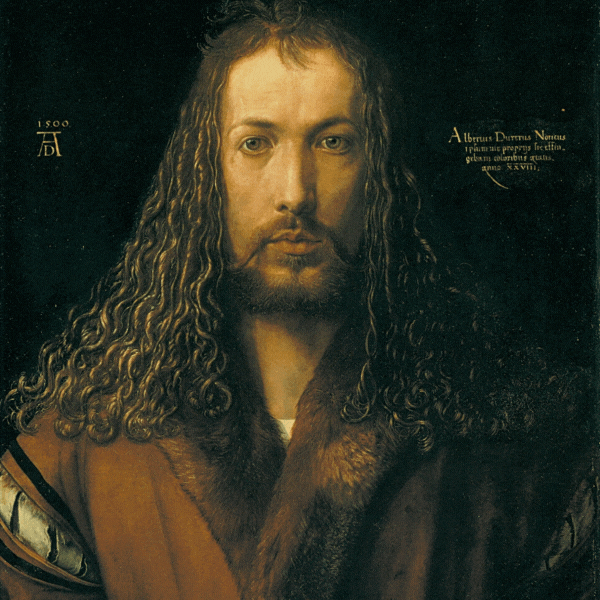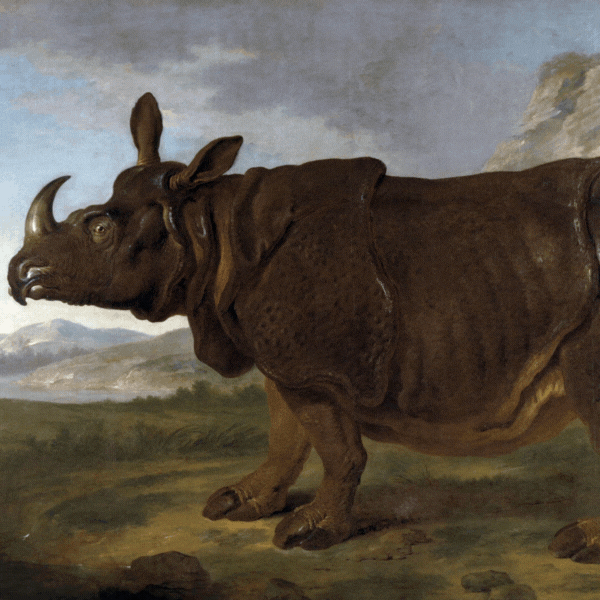The history of the Dürer rhinoceros
- 11/05/2021
With its full facade on the Atlantic Ocean, the Portugal and its browsers children, Vasco da Gama in mind, bypass the Cape of Good Hope to set foot on the Indian sand in 1498.
The exchanges between representatives of Portuguese monarchy and Indian sultans then become commonplace to resolve conflicts, seal agreements or flatter elites.
Thus in January 1515, Alfonso de Albuquerque, governor of Portuguese India in Goa, is embarking towards Lisbon among ivory furniture and other prestigious gifts, a rhinoceros, royal gift of Muzaffar Shah II, Sultan of Cambay.
May 20, 1515, the Nossa Senhora da Ajuda ship docked on the banks of Belém in Lisbon and the landing of the rhino undoubtedly made the biggest impression.
No specimen of this kind had set foot in the old Europe for over twelve centuries and the time of the Roman games.
In the royal menagerie of Manuel 1st, the perissodactyl attracts curious onlookers who come to look at the beast named Ulysse.
The fame of the rhino is such that its coming even made a noise in the Spanish, French and Italian regions.
Especially because of the excellent trade relations between Portuguese and Germans, a certain Albrecht Dürer, painter, got to know an animal that he will represent without having ever seen it.

ENGRAVING IN A BLIND WAY
They certainly already had read the writings of Pliny the Elder, Strabo and other ancient authors:
« In the same games, we also showed the rhinoceros with a horn on its nose ; we saw often this since :
this is the second natural enemy of the elephant.
It sharpens its horn against the rocks, and is thus preparing for battle, seeking above all to reach the stomach that its knows is the most vulnerable part.
It is as long as the elephant; it has much shorter legs, and color of the buis. »
One of them, a German printer living in Lisbon, Valentin Ferdinand, had sent a letter and a drawing of the beast to the merchant community of Nuremberg where he detailed the physiognomic characteristics of the rhinoceros.
Albrecht Dürer, complete artist, mathematician, engraver and painter of the Renaissance, read and was struck by the strangeness of the animal, so he began a pen sketch which became a woodcut.
His model, though close to reality, is actually an illusion :
he adds on the neck a little narwhal tooth, he draws the skin folds of the rhino as the plates of the carapace of a crustacean, and thinks the skin of its legs as scales of reptile or bird legs, and draws in it an elephant’s tail.
He adds a legend and entitled it « 1515 RHINOCERVS ».
Through the representation of Albrecht Dürer, the rediscovery of the rhinoceros had the effect of confirming the veracity of the Pliny writings and strengthen its authority among scientists.
For that, the Renaissance art and the interest for Antiquity are an important component of the Renaissance itself.
The Dürer engraving achieved a great success throughout Europe and nearly 5.000 prints of this image were probably sold during his lifetime.
The influence of the work of Dürer goes through the ages to fascinate many artists until the twentieth century.
EMBLEMS, TAPESTRIES AND SCULPTURES
Besided its editions, which have not satisfied demand, it was copied with great precision by several artists to illustrate books with naturalistic vocation published from sixteenth to eighteenth centuries.
Thus, a copy by David Kandel illustrated Cosmographia (1544) by Sebastian Münster, another the Historiae Animalium (1551) by Conrad Gessner, a third on copper this time, The History of Foure-footed Beastes (1658) by Edward Topsell.
A rhinoceros implicitly inspired by Dürer engraving was selected by Paolo Giovio in June 1536 to create the emblem of Alexander de Medicis, with the motto in old Castillian:
“Non buelvo sin vencer”, meaning “I do not come back without victorious.”
The Dürer Rhinoceros is also represented in tapestries of Kronborg Castle, in sculptures such as those in the cave of the Villa Medicea di Castello park in Florence or in the door of the Cathedral of Pisa.
The popularity of the engraving is such that, even if the real size portrait of Clara the rhinoceros (1749) by Jean-Baptiste Oudry began to replace the work of Dürer in the collective imagination, the artists continue to have a real fascination.
Many of them reproduce the engraving by interpreting it in many different ways.

In 2013, a woodcut was even sold for nearly $900.000 at auction.
For the record, Ulysse was then sent to Rome by Manuel the 1st to be given to Pope Leo X, but the ship never reached its destination since it agrounds off of Liguria, taking in the Mediterranean seabed the most famous rhino in the history of art.
THE NEO-COLLECTOR'S GUIDE
Everything you always wanted to know about the art market but were afraid to ask!
The art market often appears to be a domain reserved for a privileged few...
This is not true: accessible to all, the art market is only waiting for its new collectors.
For those who still have a doubt :
Here are the answers to the questions commonly asked!
What is a work of art?
What is the purpose of art?
What is the purpose of a certificate of authenticity?
What should you look out for when buying a work of art?
















